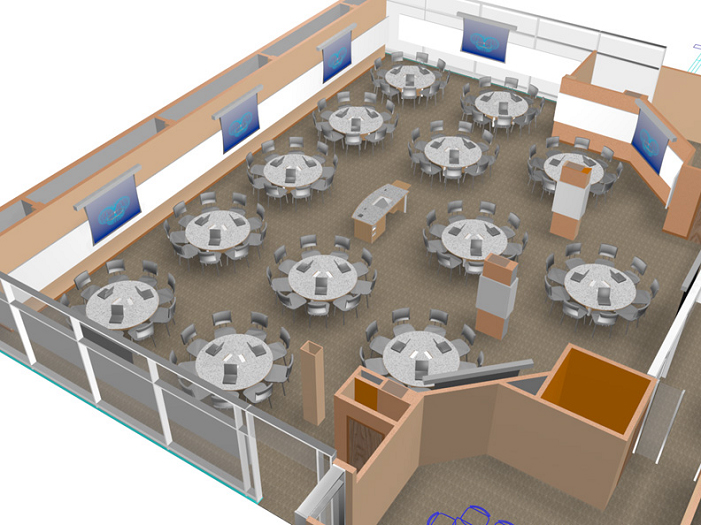ACT 2020 Summit Close
At one stage a video screen was used to show the drafting of the points covered, but then this was switched off, leaving two white boards. The material on the white boards was not readable from past the first couple of rows of seats.
Senator Lundy put my suggestion for a web discussion forum to the Chief Minister's staff and this will likely be taken up. If that is successful, hopefully the national summit will do the same. I might then get some more students for my course on how to use such technology for government. ;-)
CABARET ROOM FOR NATIONAL 2020 SUMMIT
 It occurred to me that the TEAL style learning room design could be used for this type of event. I tough it might be used for the Australian 2020 Summit, in the great hall of Parliament House. In this mode, groups of people would sit around tables. The same room would be used both for sessions involving the whole room and for table based group work. This would reduce the logistical difficulties in having to have lots of rooms and moving people in and out.
It occurred to me that the TEAL style learning room design could be used for this type of event. I tough it might be used for the Australian 2020 Summit, in the great hall of Parliament House. In this mode, groups of people would sit around tables. The same room would be used both for sessions involving the whole room and for table based group work. This would reduce the logistical difficulties in having to have lots of rooms and moving people in and out.However, the Great Hall of Parliament House is 1120 square metres, four times an MIT TEAL room and so would only accommodate about 500 people when seated at conventional round tables.

